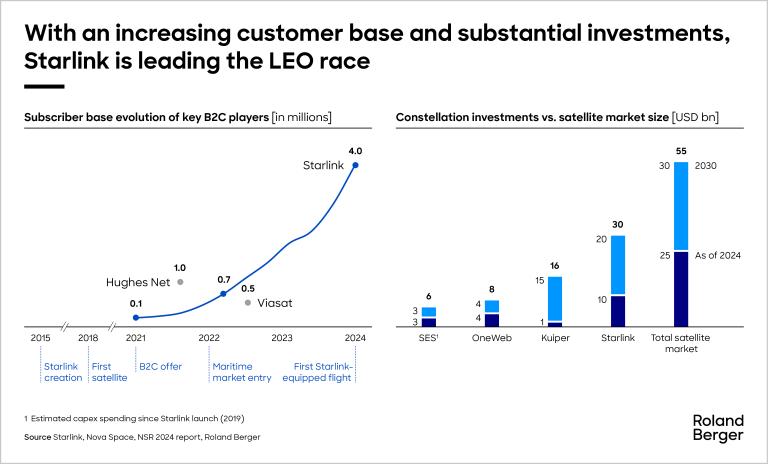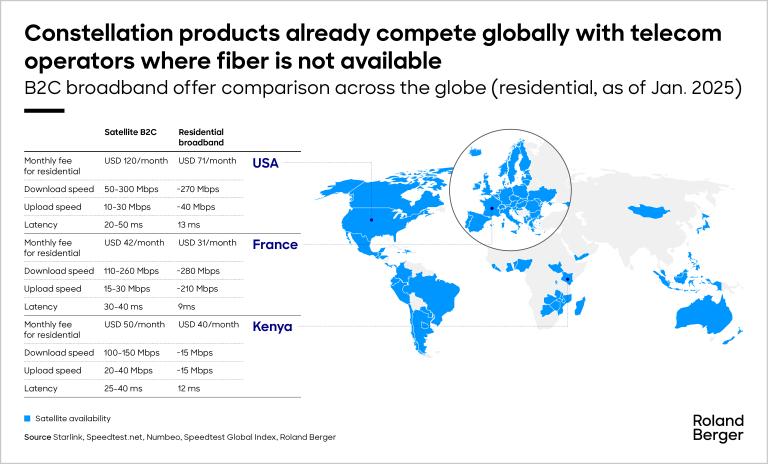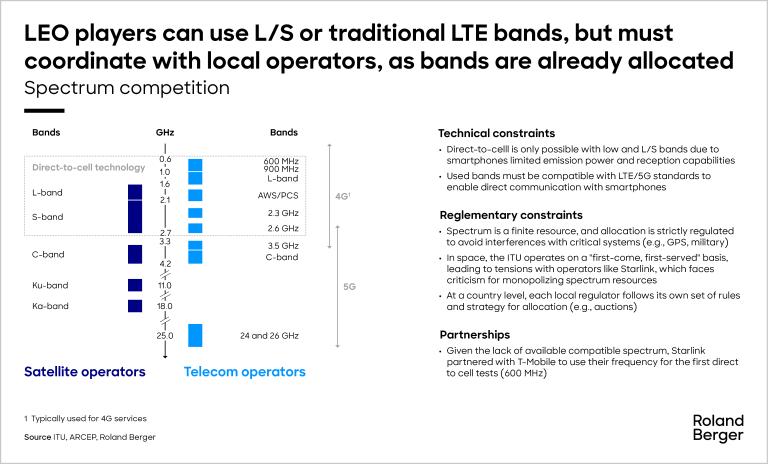Direct-to-cell technology relies on L, S and 600–900 MHz frequency bands, which are already allocated to terrestrial operators. As a result, satellite providers must negotiate agreements with local telecom players to secure access.
In Europe, where the market remains highly fragmented, at least one operator in each country is likely to be open to leasing its frequencies, particularly for underutilized spectrum with limited profitability. Regulators could also play a key role in facilitating these agreements, viewing satellite-based solutions as a way to bridge connectivity gaps in rural and underserved areas.
Role of traditional telcos and their strategic options
Telecom operators have several strategies in response to satellite companies entring the mobile market such as the following:
- Resisting constellation’s entry by influencing regulatory bodies
- Partnering with constellations to distribute B2C satellite-based products
- Developing their own alternative products, and competing directly with constellations
Each of these strategies comes with its own set of pros and cons for telecom operators. Below is a comparison of the options:
Adopt a resistance position
Pros: Delayed satellite market entry
Cons: Not a long-term solution; May only delay market entry
Build on first mover advantage
Pros: Extra revenue opportunities
Cons: Potential cannibalization of traditional revenues; Opens market to new entrants, potentially disrupting control
Develop an alternative
Pros: No cannibalization; Future proof strategy
Cons: Requires significant investment and time to develop
Conclusion
The rise of non-GEO satellites and the rapid adoption of new technologies are reshaping the satellite communication industry, blurring the lines between traditional telecom and satellite operators. LEO constellations like Starlink offer high-speed broadband services in regions where alternative is not available and positioning themselves as a key contender in the global connectivity race.
As satellite networks push further into the mobile market with innovations like direct-to-cell, the need for spectrum collaboration with local operators will become increasingly critical. Securing access to L, S, and 600–900 MHz bands will determine the pace and extent of satellite-based 4G services, making regulatory and industry partnerships essential for expansion.
For traditional telecom operators, this shift presents both a challenge and an opportunity. Whether through strategic alliances, direct competition, or the development of their own satellite-enabled solutions, they must adapt to an industry where seamless global coverage is no longer a distant vision but an emerging reality. The choices made today will define the competitive landscape of tomorrow.
![{[downloads[language].preview]}](https://www.rolandberger.com/publications/publication_image/Roland_Berger_campaign-24-2673_StarlinkGlobalTelc_Cover_download_preview.jpg)
















